Springfield SA-35 Pros & Cons
Pros
- Solid accuracy
- No magazine disconnect
- Accepts standard Hi-Power mags
- Improved controls
Cons
- Tendency to cause hammer bite
- Potential QC issues
The Bottom Line
Springfield did a good job creating a reasonably-priced faithful American-made Hi-Power clone with some tasteful quality of life upgrades. It is a fun shooter and runs well when you get a good one, but Springfield does need to mind their QC to make sure everyone gets a working gun.
Over the last 10 years, many consumers have grown tired of looking at cookie-cutter “revolutionary” striker-fired pistol designs from manufacturers looking to get their little slice of the Glock pie.
That tiredness has evolved into a longing for, to put it simply, cool things. And the people have spoken — retro is cool.
Back in 2021, Springfield threw their hat in the retro ring with the introduction of their Browning Hi-Power clone, the SA-35.
There were some clear-cut teething issues with early models, and most of the reviews are of those early production models. So, how does the SA-35 fare four years after release?

We wanted to know ourselves, so we got our hands on a 2025-production SA-35 and put it through its paces to see if this retro blaster is worth picking up.
Table of Contents
Loading…
Prices accurate at time of writing
Prices accurate at time of writing
-
25% off all OAKLEY products - OAKLEY25
Copied! Visit Merchant
Specs & Features
Specs
- Caliber: 9mm
- Action: Semi-auto, single-action
- Barrel Length: 4.7″
- Capacity: 15
- Weight: 31.5 oz.
- Country of Origin: USA
Features
- Forged carbon steel frame and slide
- Cold hammer-forged barrel
- Checkered walnut grips
- Matte blued finish
Origin of the Springfield SA-35
The original Hi-Power was one of the earliest high-capacity, functional double-stack 9mm pistols in the world.
It was created through a joint effort between the one and only John Moses Browning and Belgian firearms designer Dieudonné Saive.
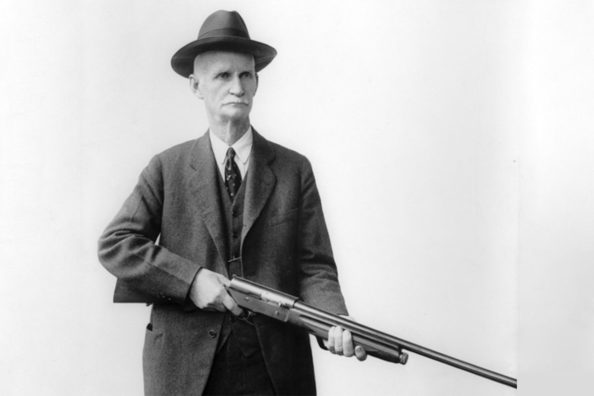
The Hi-Power was put into service in 1935 and remains in service with various militaries and police forces worldwide.
Commercially, FN announced a halt to the production of the Browning Hi-Power in 2018 after 82 years of continuous production.
It was not long after official production ceased that Hi-Power clones started popping up to fill the gap.
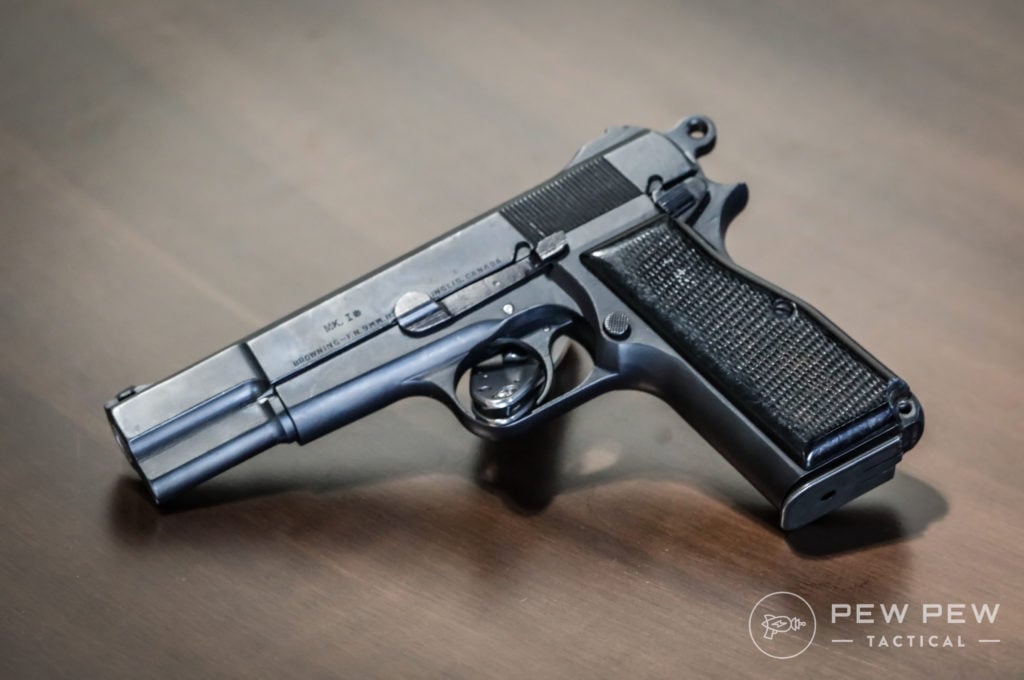
While most new Hi-Power clones were coming out of Turkey, like the models from Tisas and Girsan, Springfield saw an opportunity to try and seize some of the market share with an American-made Hi-Power clone.
In 2021, Springfield introduced the SA-35 — a Hi-Power with classic styling and design features but with a few modern touches and quality-of-life changes.
Who is the SA-35 for?
If you enjoy retro-style firearms and aren’t extremely particular about being 100% clone-correct or paying a premium for original versions, this is for you.
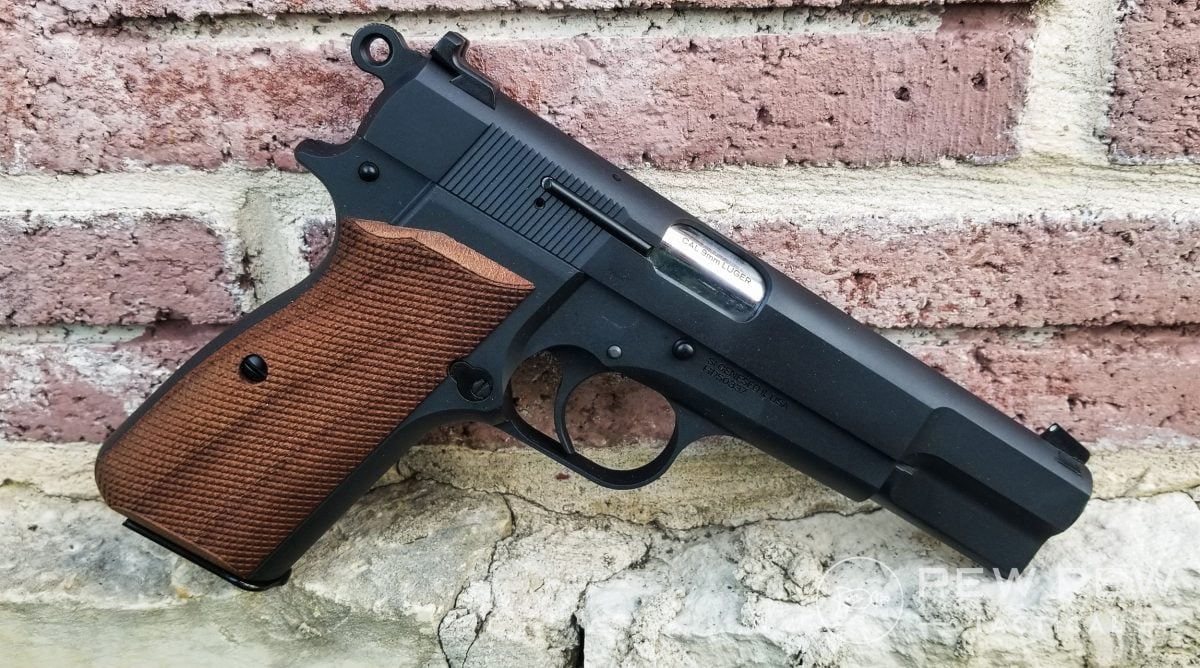
The SA-35 replicates the feel and shooting experience of the original Hi-Power, with a few niceties, at a very affordable price point. Keep in mind, this is very much a retro plinker and not a duty gun.
Ergonomics
There is something distinct about the way the Hi-Power looks and feels. It feels substantial yet nimble and thin. Much like Browning’s 1911, the Hi-Power has many fans purely based on how well it fits in one’s hand.
Springfield did a great job keeping much of the same handfeel, starting with some classic checkered wood grips. I did notice one of the grip panels came slightly loose during testing, but it was minor. A few turns of a screwdriver resolved that issue.
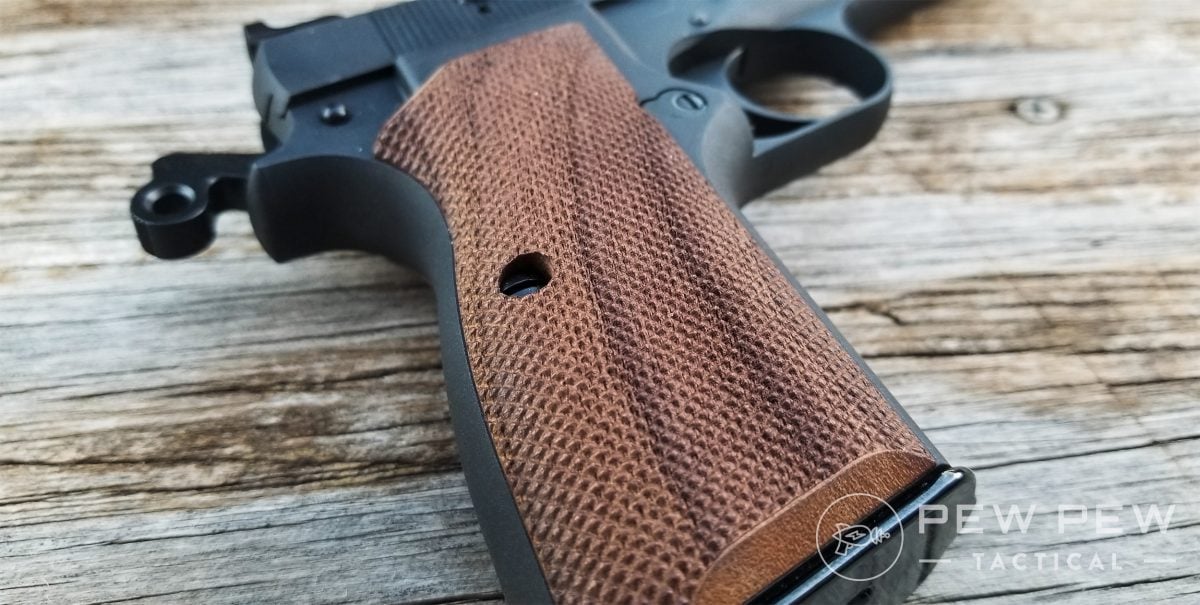
The magazine release is very similar to a 1911, utilizing a simple and easy-to-depress round button. Likewise, the slide release is easy to use, both when dropping the slide and locking the slide to the rear.
Next, we have the single-sided thumb safety. It features an extended ledge, making it much easier to manipulate than the old-style Hi-Power safety.
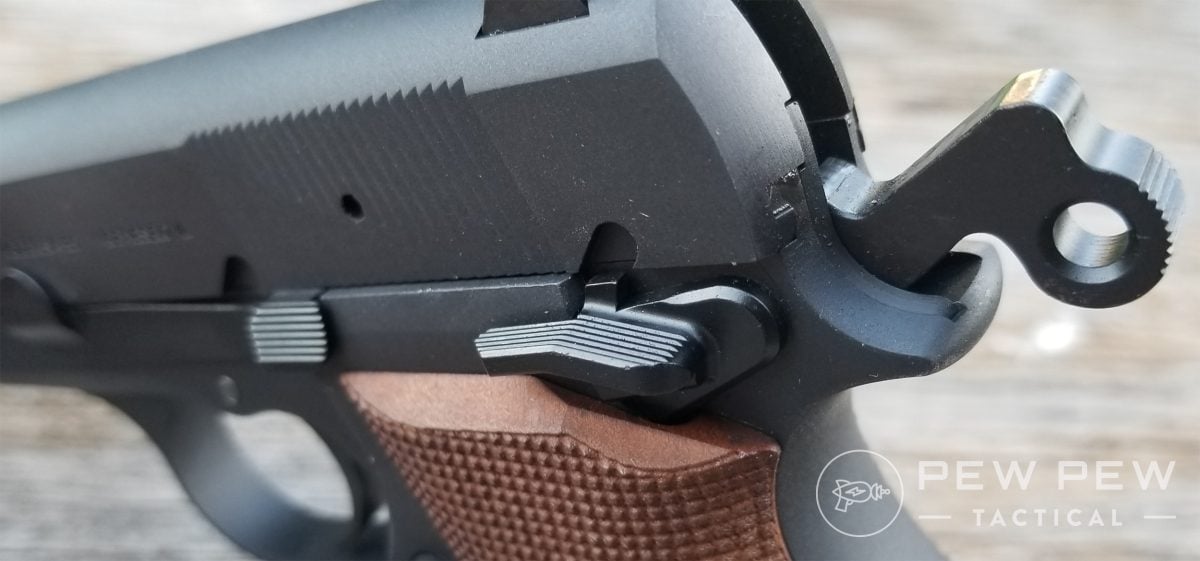
While this might look like a nice place to rest your thumb, you must resist the temptation to do so on this gun.
The original Hi-Power is well-known for its tendency to induce hammer bite. This is where the hammer of the gun makes contact with the web of your hand during the firing process, either pinching or cutting the skin.
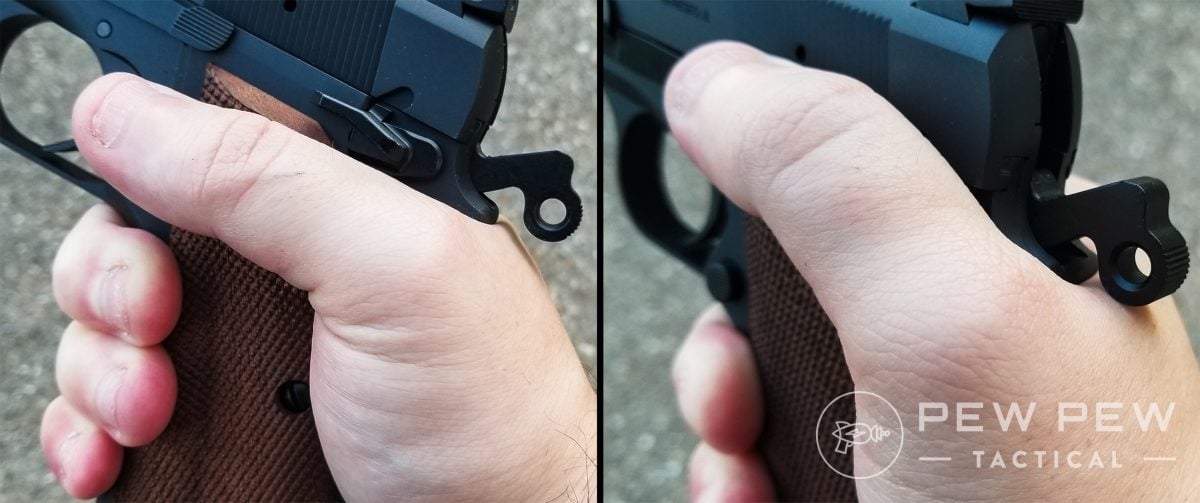
Springfield did change the geometry of the hammer to help alleviate this, but I am going to be real with you folks; you still can’t ride this gun too high.
My hand got chewed up during shooting, especially as I got tired and reverted to my base training of choking up on the gun to manage recoil. The cut may not look bad, but it was a bit deeper than the picture may suggest.
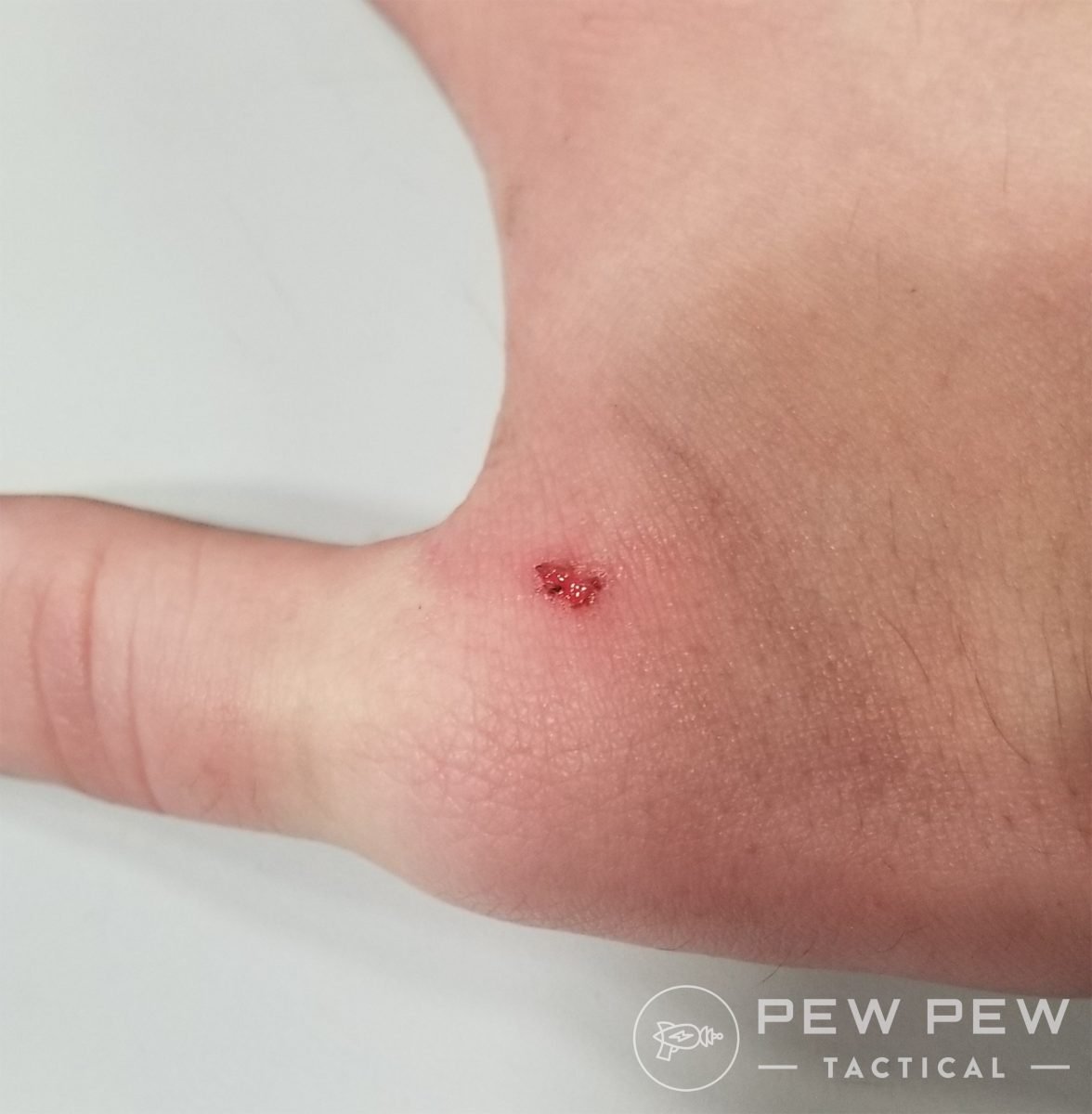
You can see that if you ride the safety, you will make contact with the hammer. Don’t be an idiot like me. It isn’t a race gun; don’t hold it like one.
Ergonomics: Fit & Finish
Everything on the gun locks up pretty tight with only a slight rattle — it feels solidly built.
The exterior finish feels a little grainy and gritty, but it is evenly applied and appears to be fairly durable. However, I do find myself longing for the bluing that many of the Browning Hi-Powers had.
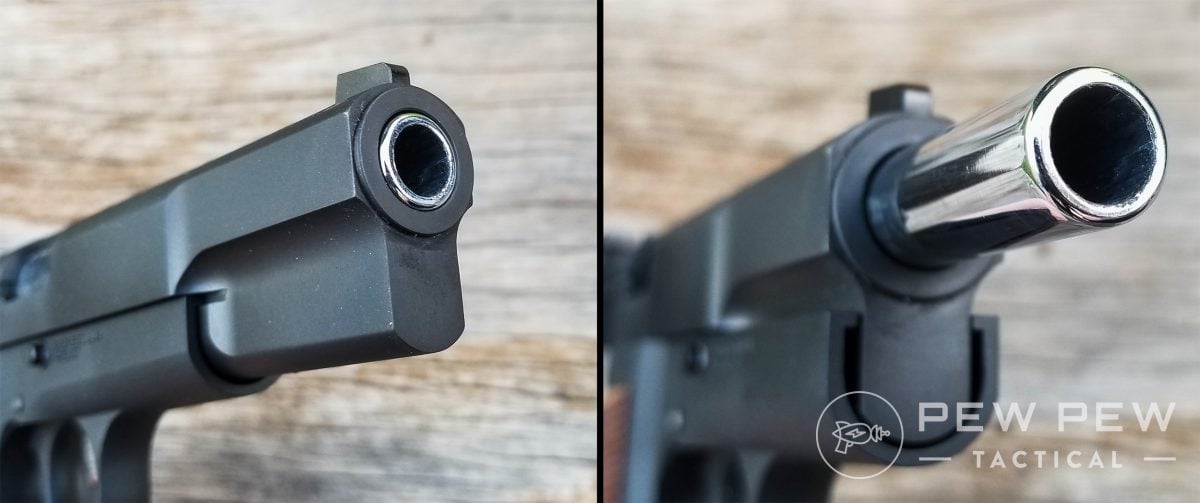
The barrel is high polish stainless steel from front to back. You also get some nicely angled-cut slide serrations that provide more than enough bite for slide manipulation.
Up top, you get a serrated and blacked-out rear u-notch sight with a fairly thick white dot front sight.
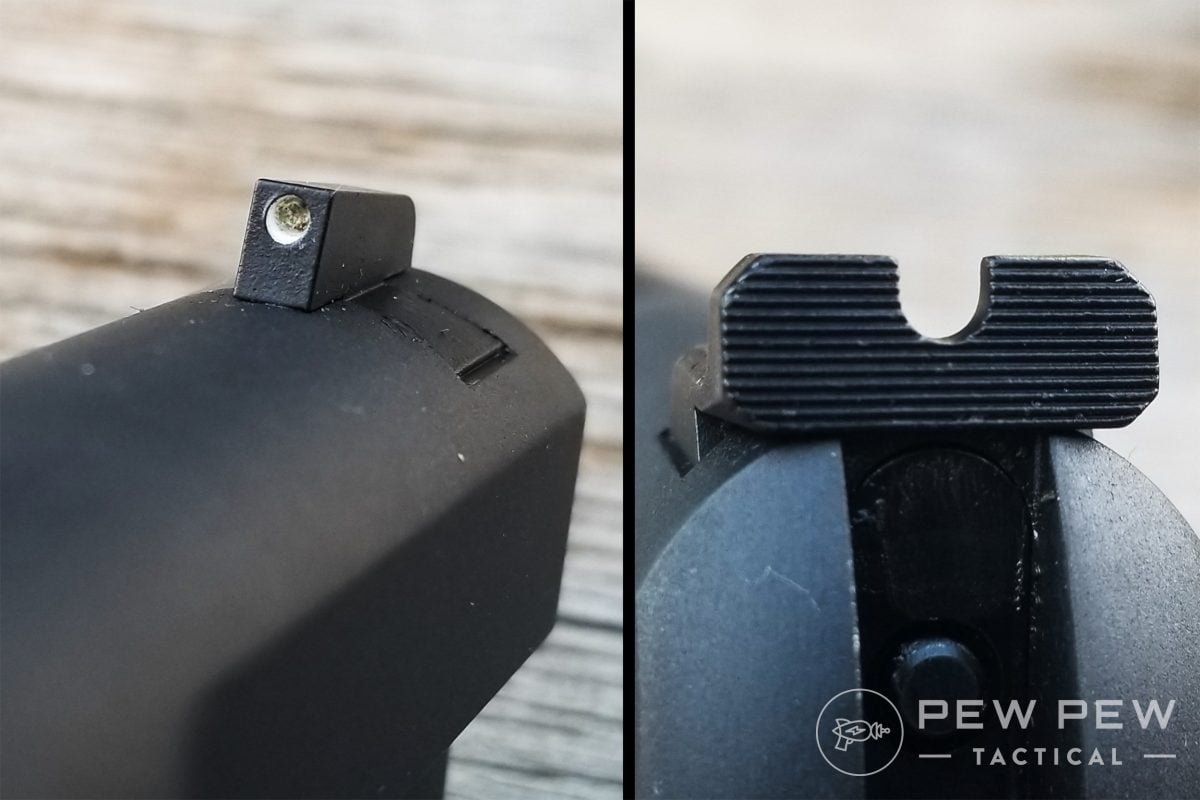
Springfield wisely made the decision to make the SA-35 compatible with original Hi-Power magazines. The gun ships with a single Springfield-branded Mec-Gar 15-round magazine that fed flawlessly.
I tried my other 13 and 15-round Mec-Gar magazines from my personal stash, all of which performed 100%.
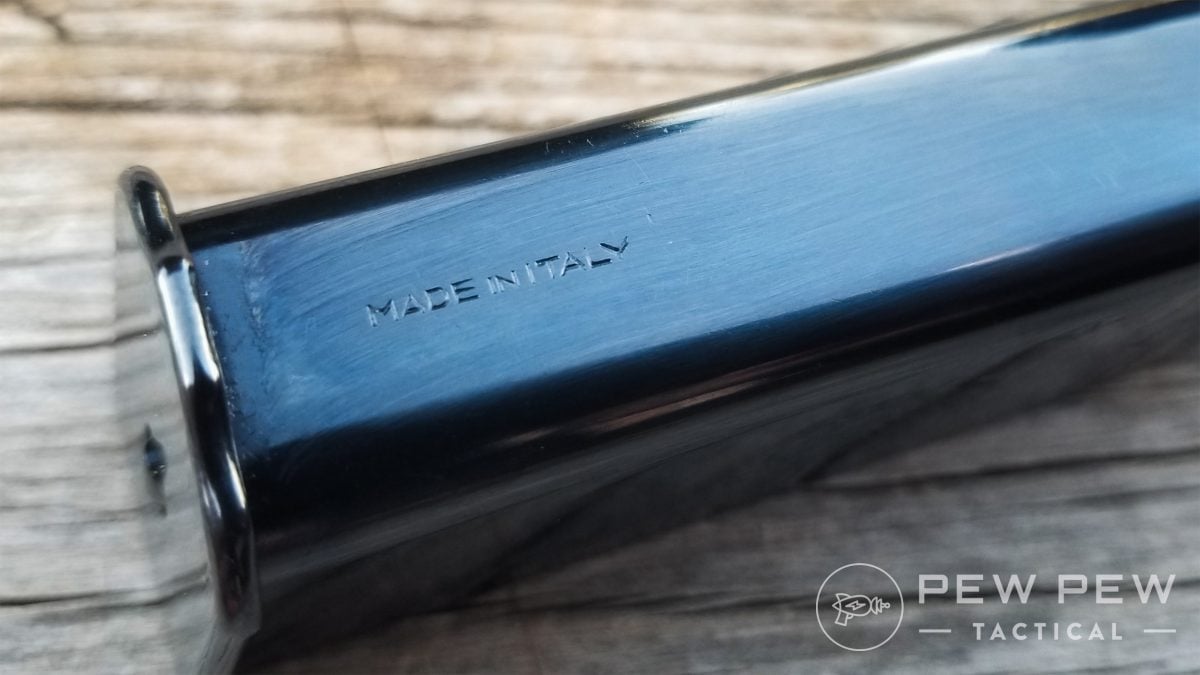
Trigger
The original Hi-Power featured a magazine disconnect, meaning the gun would not fire without a magazine inserted.

This is a safety feature that is hated by many due to the fact that magazine disconnects almost always make triggers heavier and grittier.
Springfield opted to forgo having the magazine disconnect in favor of an improved trigger pull. A wise move if I say so myself.
The trigger pull begins with a bit of takeup, followed by a fairly well-defined wall. Once you reach the wall, there is some pressure, followed by the tiniest amount of creep before the trigger breaks right at around 4 lbs.
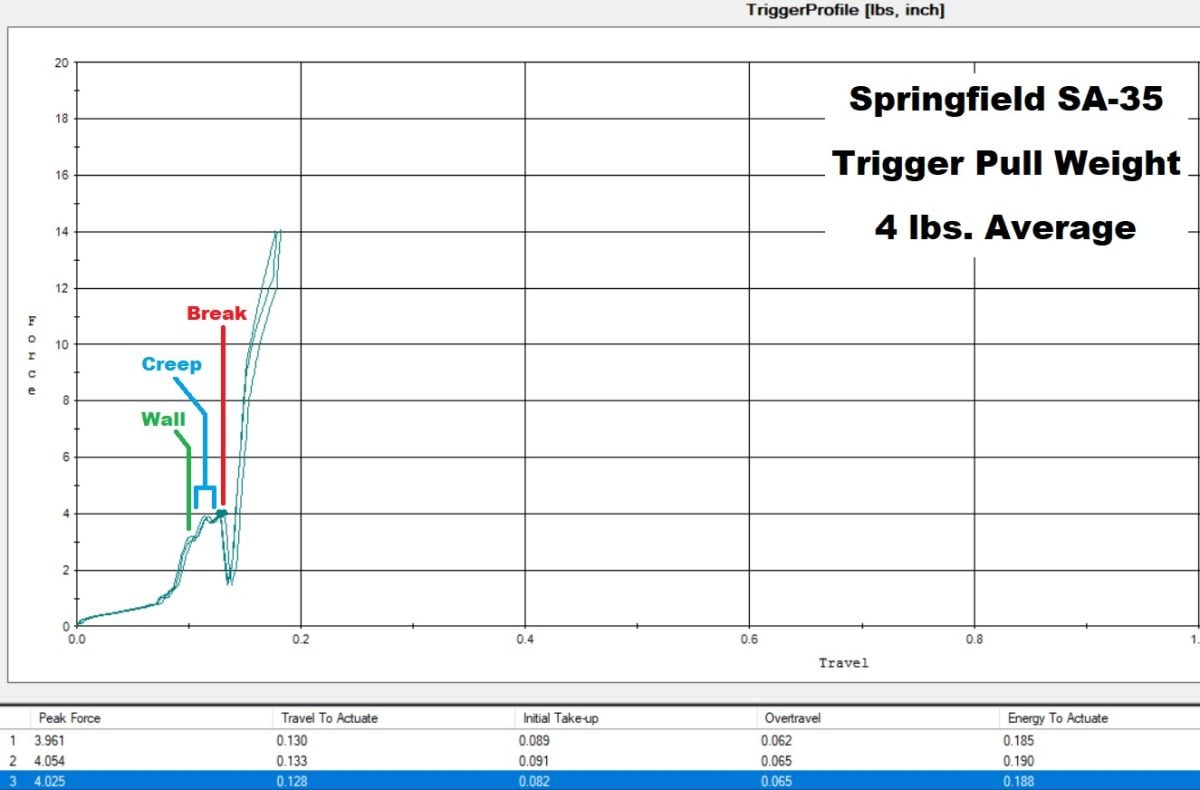
As with most Hi-Powers, the reset is all the way out, and is barely audible and not tactile at all. If you’re a stickler about trigger reset, this one is likely to disappoint you.
Overall, the trigger is much better than the original Hi-Powers with magazine disconnects. It doesn’t have a glass break like a quality 1911, but I file it under the “good trigger” camp.
How Does the SA-35 Shoot?
You have to approach the Hi-Power like a gun that was designed in the 1920s, because it was.
It is delightfully balanced if a bit heavy, but it points very naturally with an easy reach to a trigger that doesn’t require a lot of movement to break.
These qualities help to squeeze some decent accuracy out of the platform. At 7 yards, I was easily able to keep an entire 15-round magazine inside of a small bullseye sticker.
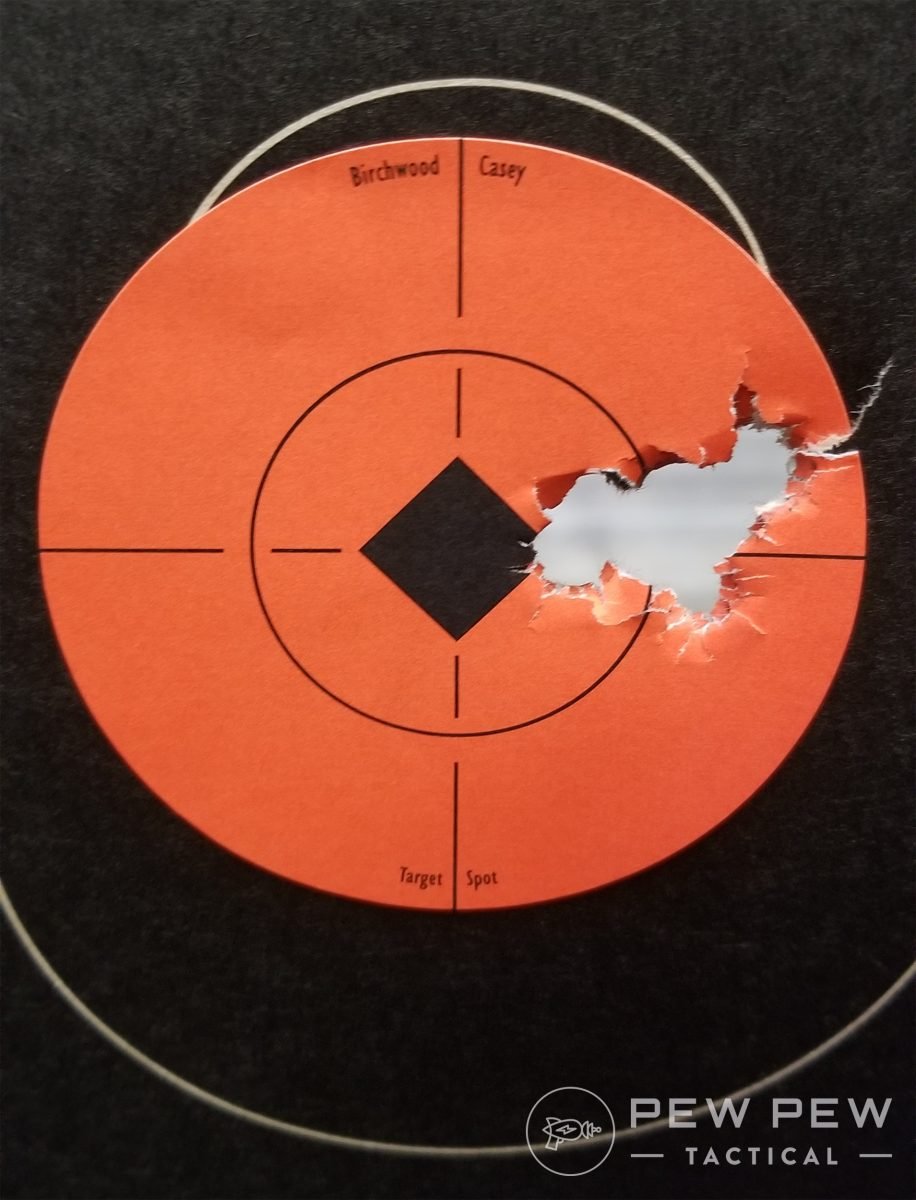
Accuracy at 10 yards opened up a bit, but was still great. I found that at 15 yards, things started to get really difficult, but if I was really focused, I could still achieve solid groupings.
I was annoyed that the gun was printing to the right of my point of aim. I know this wasn’t user-induced because the first SA-35 I tested shot to the left with the same ammo (spoiler alert!).
Barrels don’t always lock up the same from gun to gun, and this is somewhat to be expected from a gun in this price range.
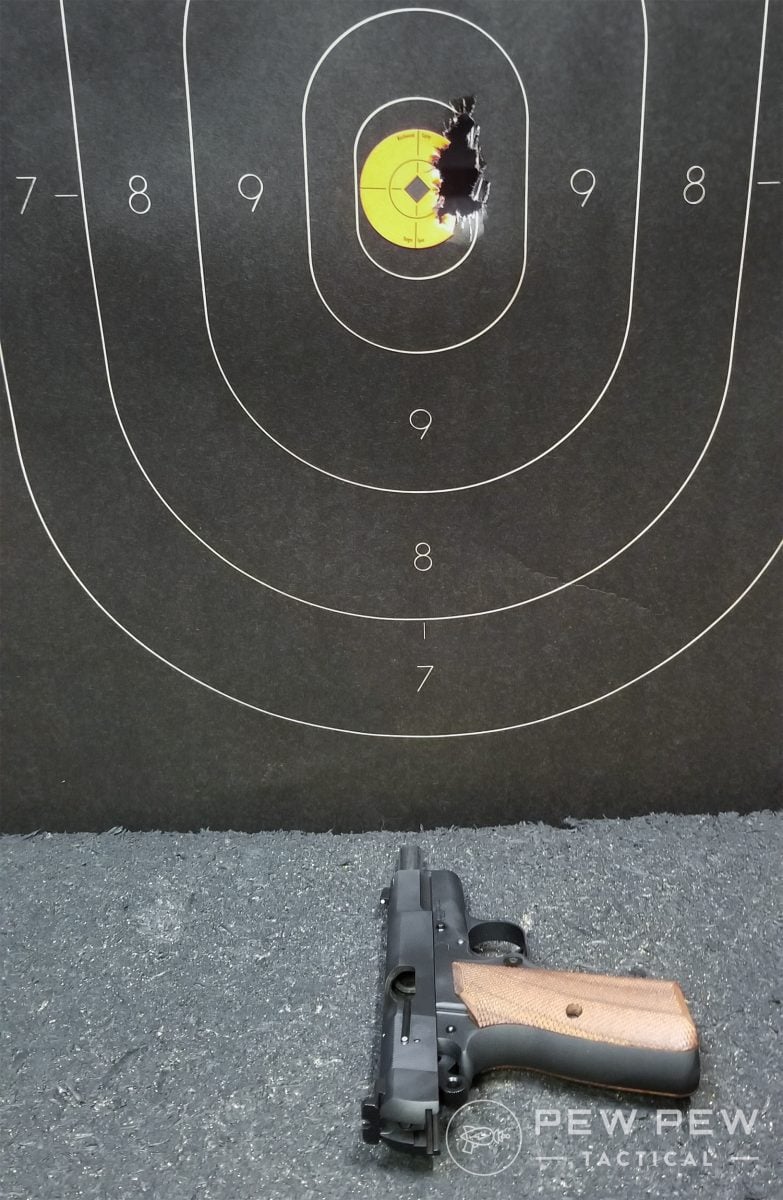
Since the SA-35 doesn’t have the lowest bore axis, it does tend to muzzle flip a little bit. Despite this, the ergonomics ensure the gun never feels out of control or difficult to tame.
Quite the opposite, in fact. As I settled into shooting more, I found that stacking shots close to each other during double-taps at 7 yards became pretty easy if I did my part.
Overall, the gun shoots pretty well, and I had a good time shooting it (minus the hammer bite). But I can’t help but think about how this gun is so close to being absurdly fun.
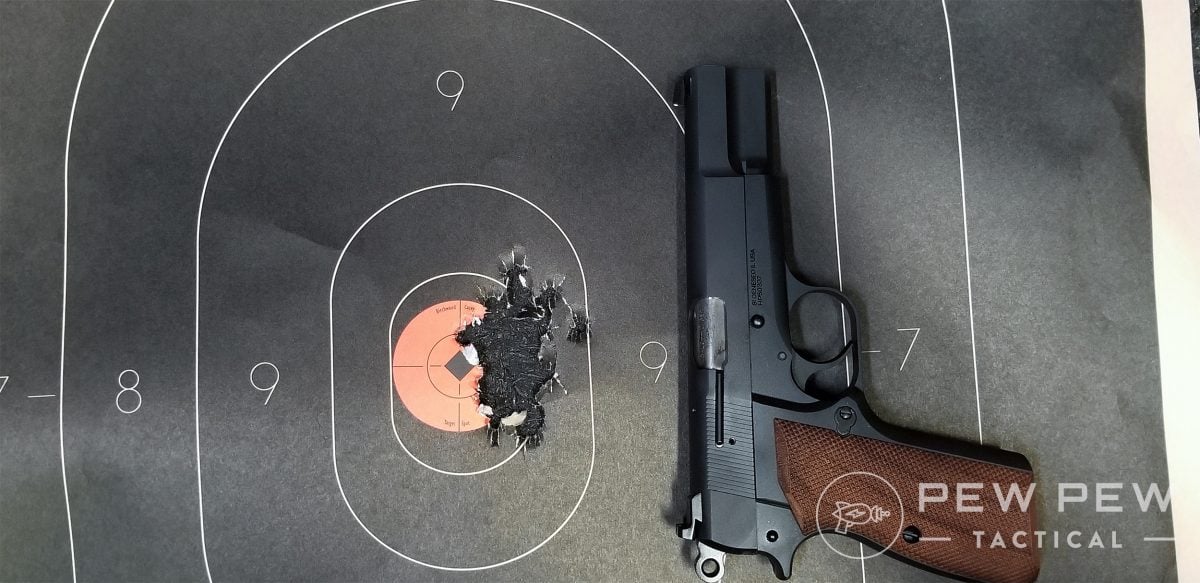
If the sights were shooting to point of aim, and there was an extended beavertail to protect my dainty little hands, I’d be taking this gun out almost every range trip.
Reliability
Springfield sent me an SA-35 a few months ago, which I put 500 rounds through.
Long story short, I had 12 failures to feed with various ammo during that 500-round period. I even did a full clean and lube around the 250-round mark to no avail.
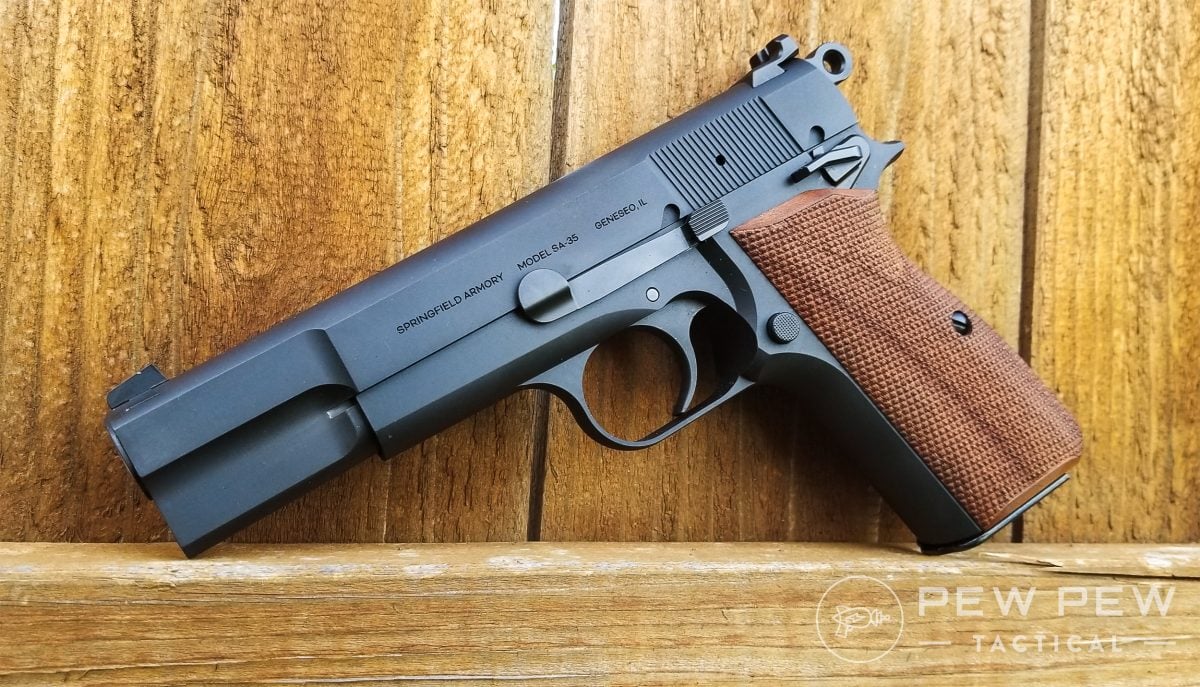
This was shocking, as the overwhelming majority of Hi-Power issues, regardless of manufacturer, are typically extractor-related. I was expecting potential failures to extract, but not failures to feed.
I contacted Springfield, and they asked me to send the gun back in. Instead of receiving the same gun back, I received a new gun for testing.
After getting the second SA-35, I ran about 400 rounds through it, including a handful of Speer Gold Dot hollow points, this time with absolutely zero malfunctions.

My suspicion is that the barrel may have been out of spec on the first one, but it is hard to say. I was disappointed that I didn’t receive the original gun back with a repair order, but the second copy does show promise that the gun can work as intended.
What Sets It Apart
The SA-35 is a fairly faithful reproduction of the original Hi-Power, with some sensible upgrades and none of the gaudy looks of a modernized pistol.
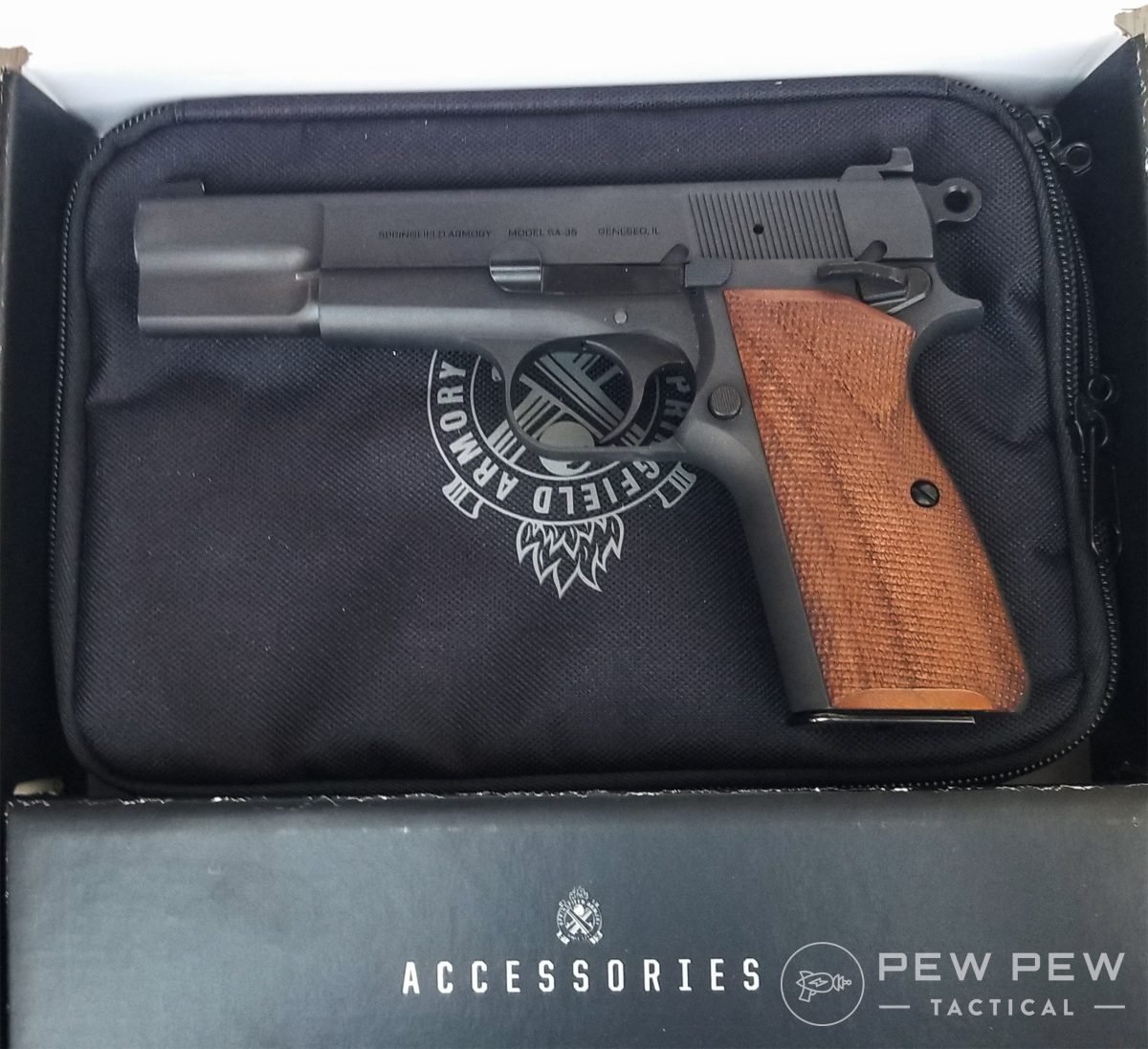
It is a forged steel, American-made pistol that comes in under $700. Any new Hi-Power clone that is cheaper is going to be of Turkish origin, which may steer buyers toward Springfield.
By the Numbers
Reliability: 3.5/5
The first gun had about a 2% failure rate, which isn’t great but isn’t the worst when it comes to a repro of an old design. However, the second version I received ran flawlessly. Quality control will be the deciding factor here.
Ergonomics: 3.5/5
The Hi-Power design feels great in the hand, and Springfield has made some improvements to the controls. However, hammer bite is still a real issue. This is no fault of Springfield’s; it’s inherent in the original design.
Accuracy: 3.5/5
I wouldn’t call it a tack driver, but the accuracy was pretty solid across the board. If I didn’t have to shade left to compensate for the sights being off, accuracy would be a four.
Customization: 2/5
This is a retro gun that can take a few aftermarket Hi-Power parts, but you really shouldn’t touch anything on this gun outside of a potential trigger job.
Value: 4/5
While Hi-Power clones from Inglis and Girsan can be had for cheaper, I feel like getting an American-made Hi-Power with forged parts for under $700 is more than fair. I just wish they’d include at least two mags.
Overall: 3.5/5
Prices accurate at time of writing
Prices accurate at time of writing
-
25% off all OAKLEY products - OAKLEY25
Copied! Visit Merchant
9mm Ammo in Stock
How We Tested the Springfield SA-35
Two separate Springfield SA-35s were used during testing. The first gun had 500 rounds run through it, with the second gun having 400 rounds put through it.
The ammo used was a mix of AAC 115gr FMJ and Speer Lawman 124gr TMJ ammo. I used Speer Gold Dot 124gr to test functionality with hollow point ammunition.
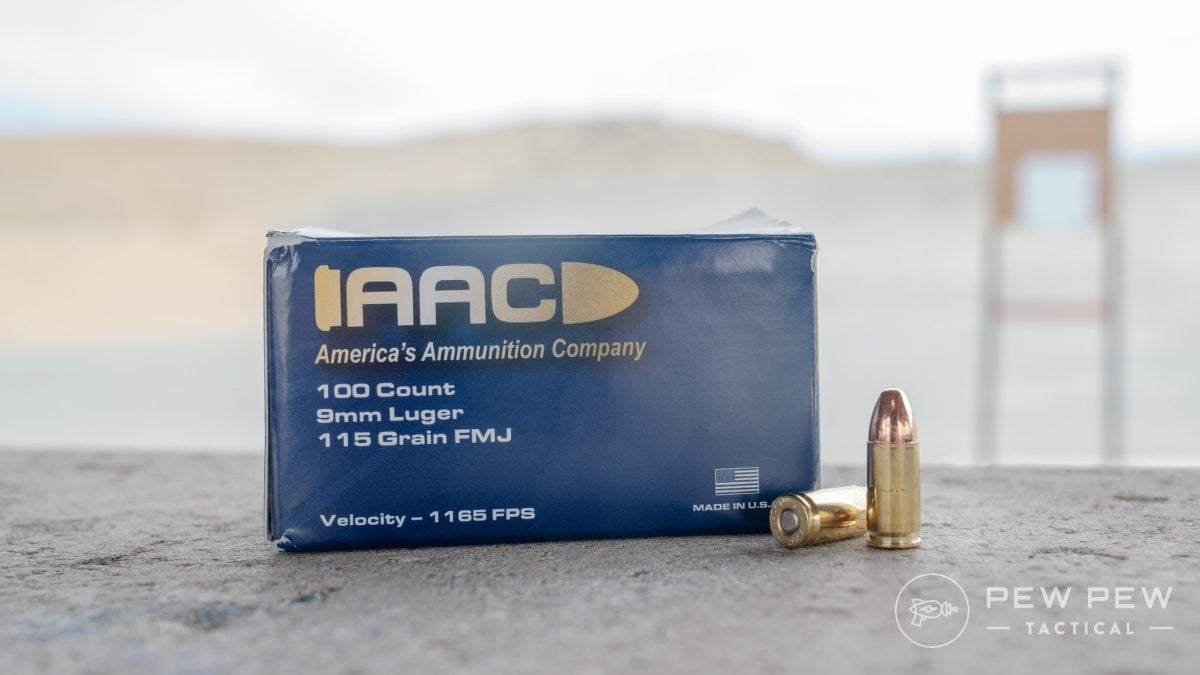
Accuracy tests were conducted at 7, 10, 15, and 25 yards. Double-tap and Mozambique drills were conducted at 7 and 10 yards to test for recoil control and shootability.
Trigger data was gathered using a Dvorak TriggerScan instrument.
Meet the Experts
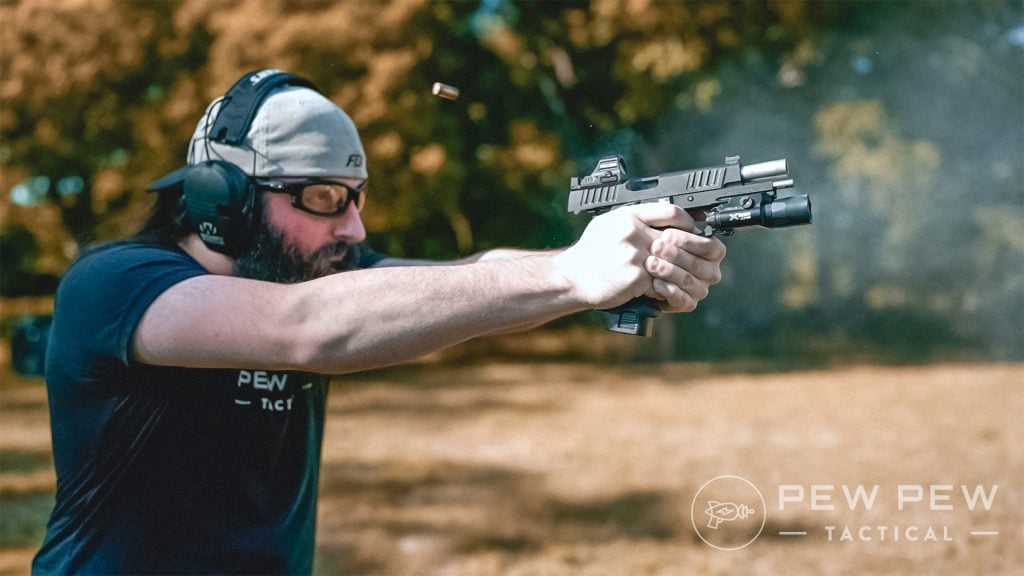
Penning this review is Pew Pew Tactical Editor, Wyatt Sloan. Wyatt is an NRA-certified instructor with previous experience as a competitive shooter, long-range shooter, and avid hunter. Wyatt personally owns over 200 firearms and has 10 years of home-based FFL firearm sales. He has a few retro-style guns himself, including a Hi-Power clone, and definitely has love for the old-school-cool.
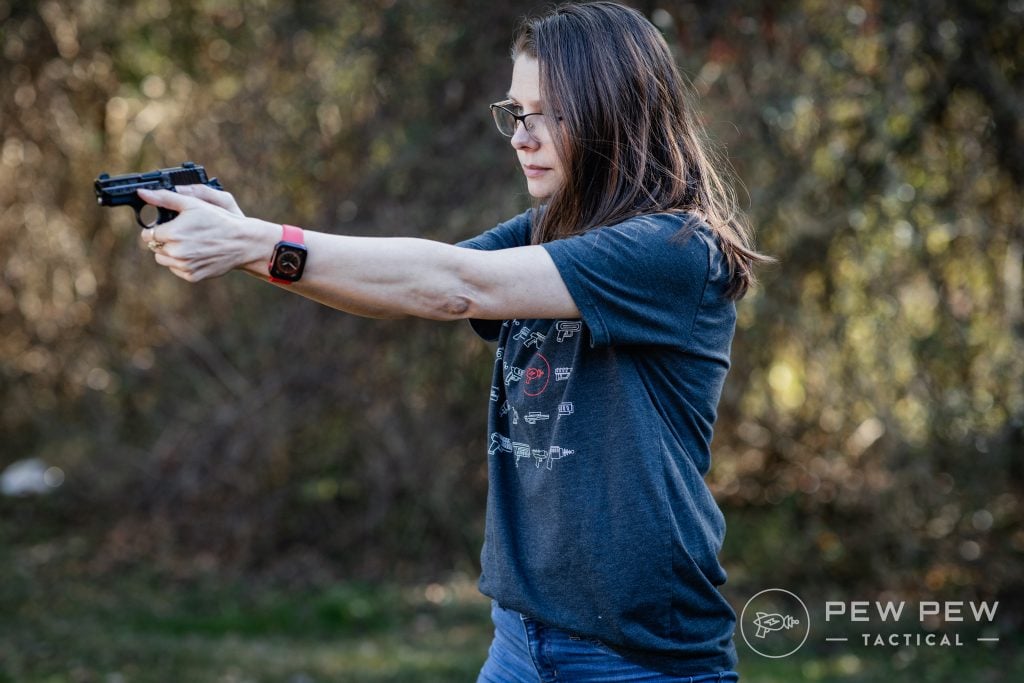
Editor-in-Chief Jacki Billings runs our experienced team of reviewers. She is a National Rifle Association Basic Pistol Instructor as well as a member of the Society of Professional Journalists, ACES: Society for Editing, and the Professional Outdoor Media Association. Jacki has a bachelor’s degree in journalism and has worked as a media professional for close to 20 years, specializing in gun media for almost 10 years. With 2,000+ articles to her name, she uses her professional journalism and editing experience to set testing protocols and editorial standards for Pew Pew Tactical.
Final Verdict
Hi-Powers have been coveted for many years due to their exceptional balance and feel. Although they have been largely replaced by more modern firearms, they remain desirable pistols.
Despite potential quality control issues, the SA-35 does the original Hi-Power justice with a smart yet reverent design that brings the Hi-Power experience to the masses at a reasonable price.
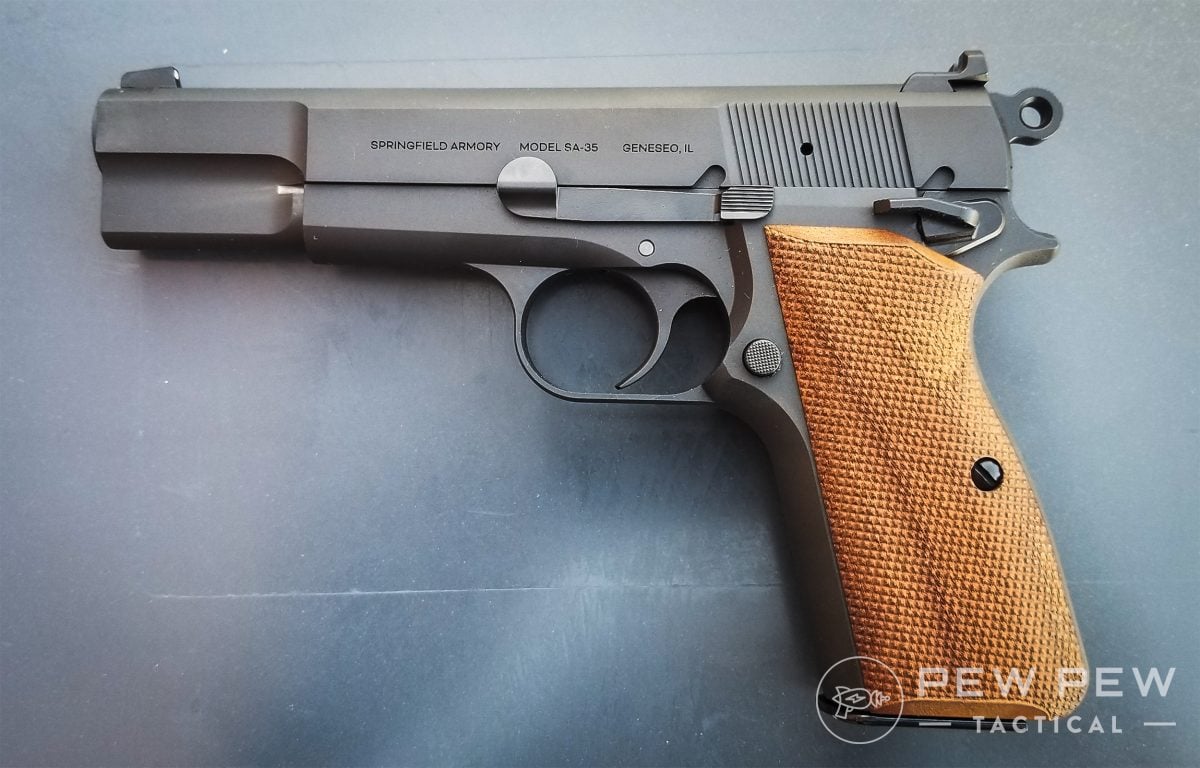
What are your thoughts on the Springfield SA-35? Do you have any experience with Hi-Powers? Let us know in the comments below! Interested in more old-school repros? Check out our article on the 7 Best Retro Reproductions!

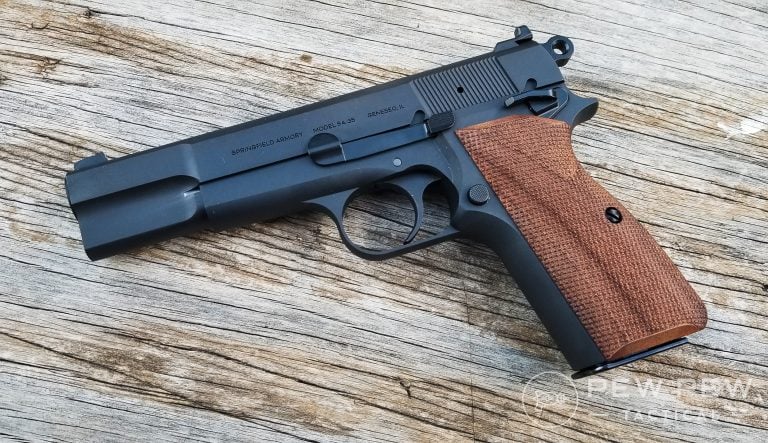
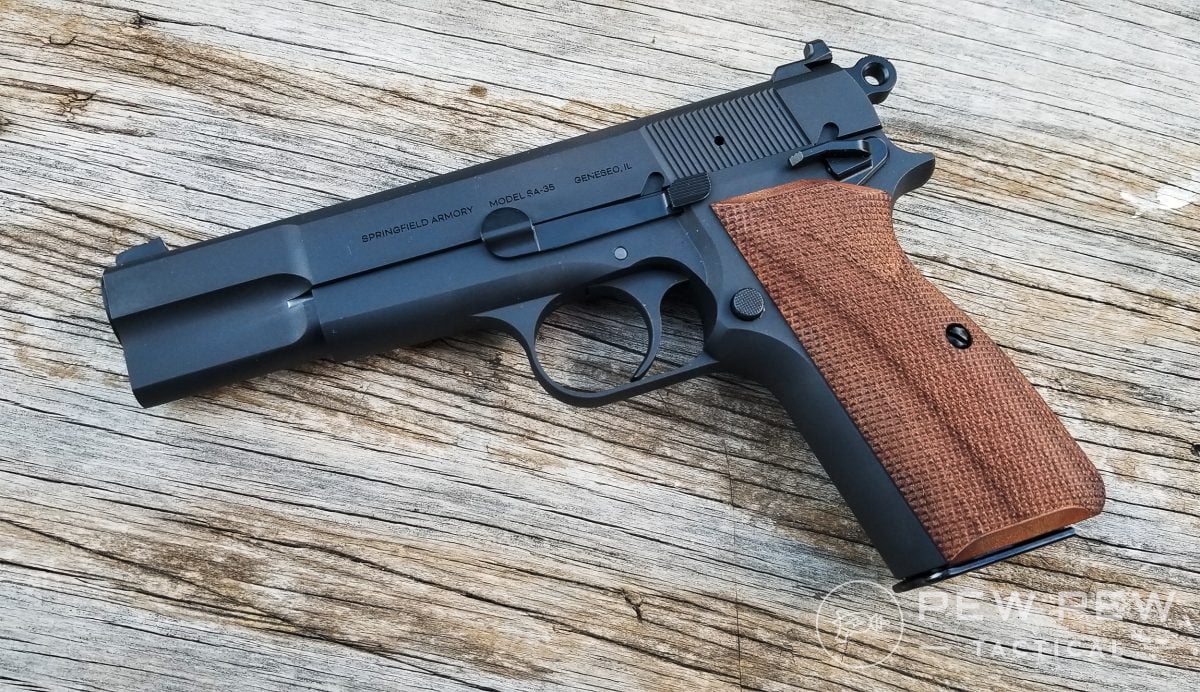

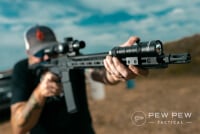



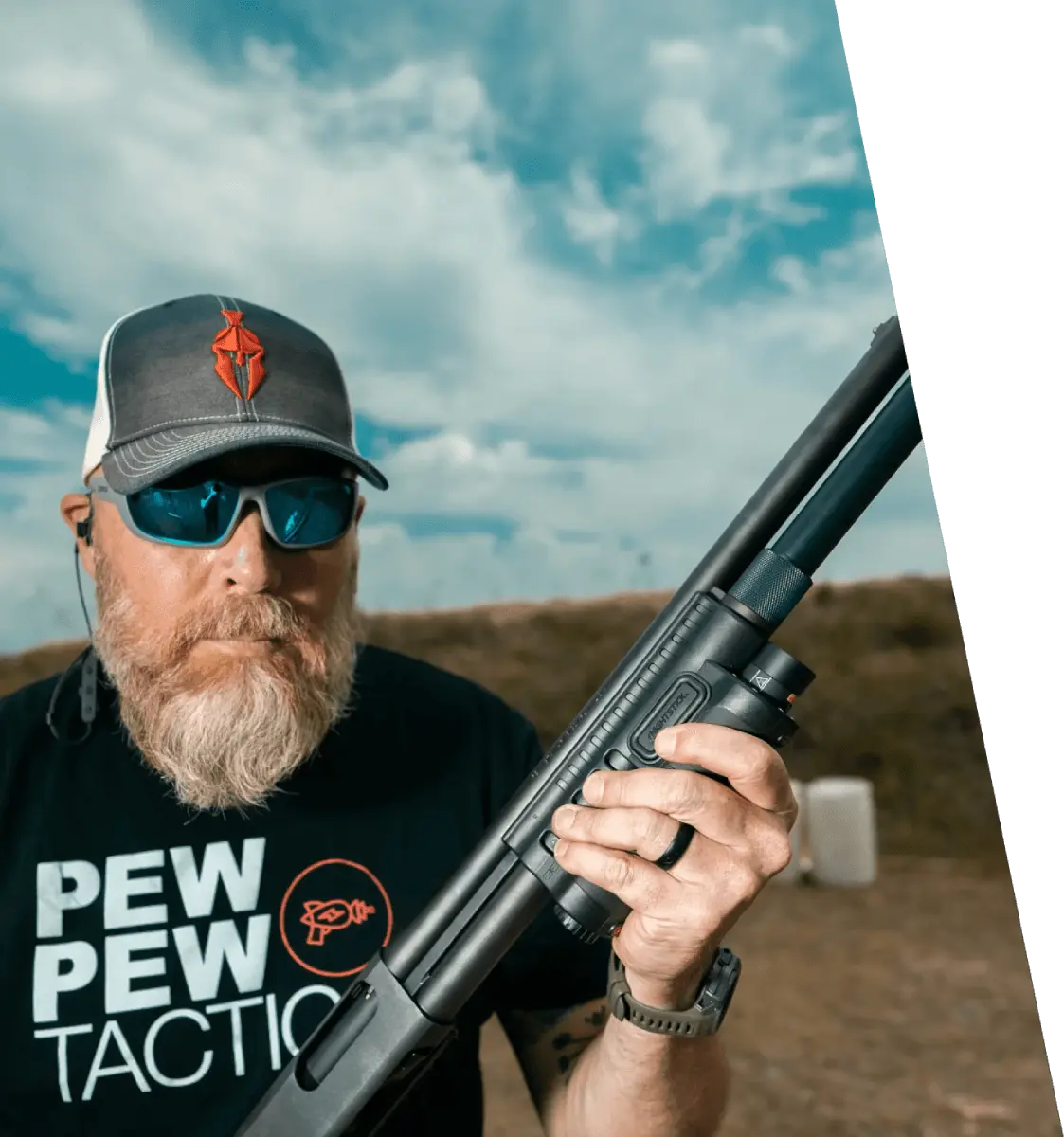

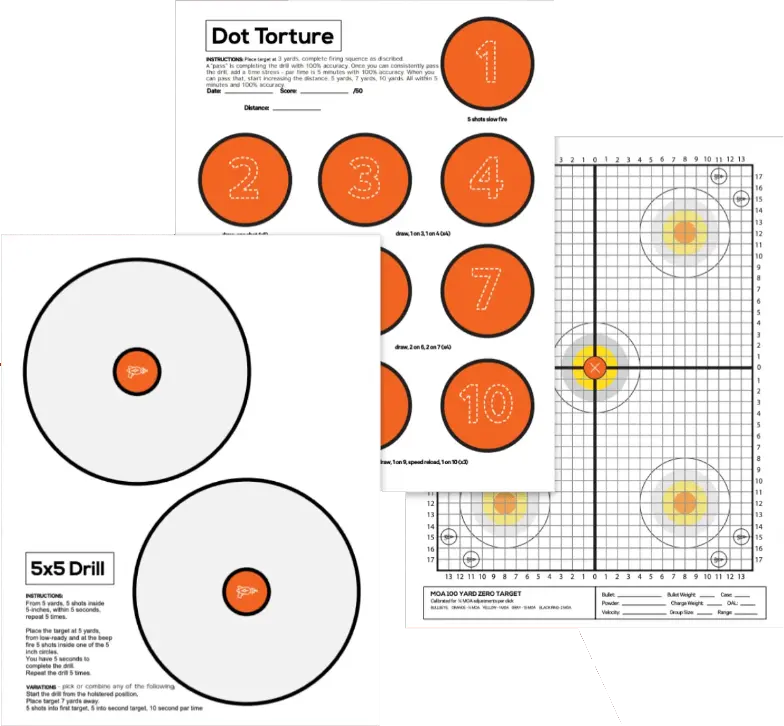
3 Leave a Reply
I had a Belgian made Hi-Power witha great trigger (mag disconnector removed) and I let it go in a moment of insanity. When I saw the SA-35 I jumped on it. I got it with a niffty carry bag and 4 mags. After about a 100 rounds I started getting failures to feed. I sent it back to Springfield and they fixed it. 500 round plus without a hicup. The gun is more accurate than I am (aren't they all) and is fun to shoot. I will put an Apex trigger kit in it soon. All in all I am very pleased with the SA-35.
I purchased the SA35 when the price returned to being affordable. Prior purchasing the SA35 I had purchased a Girsan MCP35 9mm HiPower clone. After 500 plus 9mm FMJ 115 & 124 gram rounds fired, I had no issues (failure to load, failure to extract) in addition the pistol finish was very durable and not subject to scratches or pistol wear marks. The SA35 I purchased has had several failures (3) to load after 300 rounds fired using the megar 15 round magazines. I have noted pistol wear marks from holstering with the urban carry holster which did not affect the pistol finish on the Girsan 9mm pistol using the same holster. I will try using different brands of 9mm ammo to see if the issue is resolved or if not will contact SA for assistance in resolving the failure to load issue. For the price of the SA35 one would expect few problems requiring resolution.
Great write-up. Hopefully SA sorts out the QC so that this becomes a long-term success for them.